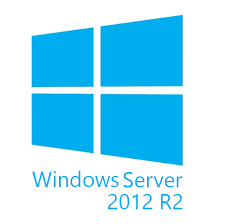Exchange 2010 Archiving
Email archiving is the one of the difficult part in a messaging environment, not only for messaging administrators it affect the end user and the business, since email it’s a business critical application and it’s essential to preserve the critical mails, we normally use PST to archive the old mails if the user have mailbox quotas, how ever PST’s are stored locally on the user system hence organization doesn’t have the control on this since it’s out side the Exchange server, no backup been taken for locally stored PST’s, to overcome this issues Microsoft come up with the solution called E-mail archiving on Exchange 2010 server.
Before going in to Exchange 2010 archiving feature, Email archiving only require if you have mailbox limit or mailbox quotas, since the storage system in very expensive we are prefer to use mailbox limit to limit user to store the mails in to Exchange server, thanks to Microsoft for the new product Exchange server 2010 because Exchange server 2010 able to provide 70% more performance compare to Exchange 2007 and also have new feature called DAG, now you can use inexpensive disk for your messaging environment with more mailbox limit for user. For more info please check my previous article Disk performance change in Exchange 2010
Now a day’s Email is the common medium for communication in all the enterprise, so the mail flow and storage for message system are increased, companies are struggling to provide storage management to lower costs and data retention and discovery processes required mail (e-Discovery), since most of the mails are stored out site the Exchange server and more over user can’t access there PST outside of the office using OWA (Outlook Web Access)
It could lead to user productivity and user always needs to manually move the old and unwanted mail to PST, to avoid this you can use the Exchange 2010 Archiving feature
Exchange 2010 Archiving
Microsoft has delivered new, integrated e-mail archiving, retention, and discovery capabilities with the release of Exchange Server 2010, integrated Personal Archive in Exchange 2010, e-mail currently stored in .PST files or other locations can be easily moved back to the server, You can access the mailbox and archive mails anywhere through OWA (Outlook Web Access) or OWA (Outlook Web application)
The Personal Archive is a nothing but a secondary Exchange mailbox that is linked with a user’s primary mailbox. Through this you can provide an alternative storage location for their old e-mail, greatly reducing the need for and proliferation of .PST files. E-mail items from a user’s primary mailbox can be automatically offloaded to the Personal Archive through Retention Polices, you can use the high availability feature to improve mailbox storage management and also Exchange 2010 enables you to take advantage of high-capacity, low-cost disks to provide archive solution.
How To Configure Archive Mailbox for user
You can configure archive mailbox while the time of user creation, user creation wizard will ask “create an archive mailbox for this account” just select this option.
You can also configure archive mailbox for existing user, in EMC go to Recipient Configuration then right click the user and select “Enable Archive”.
Retention policy
Customized retention policy to fulfill everyone’s requirement, retention policy is to manage message retention, like you can configure the policy to inbox so that message can be automatically moved to user Personal Archive or deleted items after it reach the retention age, You can allow users to assign personal retention policies to individual messages, conversations, or folders to ensure proper message expiry is set on important e-mail. Every user can adopt and customize e-mail retention and message classification to their individual work styles
Legal Hold policy
Legal Hold enables the preservation of any edits to or deletions of e-mail made by the user placed on hold, whether in their primary mailbox or Personal Archive. Altered messages are captured in a recoverable items store within Exchange that is neither accessible to nor changeable by the user.
Legal Hold can be set on individual mailboxes or across the enterprise and can be set for a specific time period (for example, hold items for 90 days). Legal Hold also includes an option that automatically alerts users through Outlook 2010 that a hold has been placed on their mailbox
Multi-Mailbox Search
Now you can search a particular mail based on keyword and you can select a specific mailbox or mailboxes, distribution group as targets of the search, with the Exchange role based security delegation you can delegate who are normally tasked with conducting e-Discovery for range of legal, regulatory, or personnel reasons, this search automatically includes relevant e-mail found in a user’s primary mailbox, Personal Archive, and recoverable items store
Related Articles
Features Removed from the Exchange 2010
Active Directory 2008 features
High capacity and low cost disks for Exhcnage 2010 server
Disk performance change in Exchange 2010
Schema version for Exchange 2010
Schema Version for Windows 2008 R2



